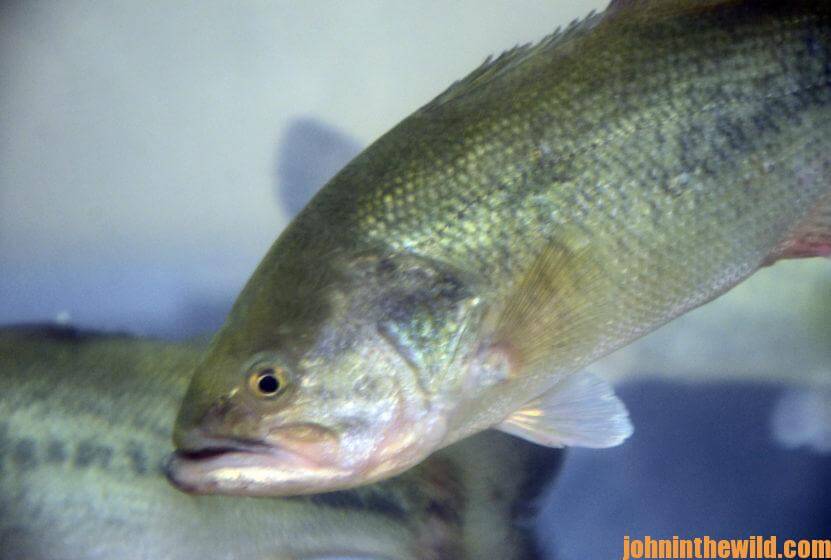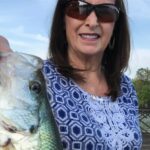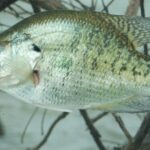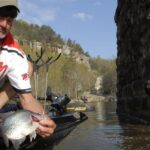Editor’s Note: In 2019, Ott DeFoe of Knoxville, Tennessee, won the Bassmaster Classic on the Tennessee River and $300,000 in February, 2019. In mid-March of 2020, Defoe won $100,000 on Day 3 of Stage 3 of the Bass Pro Tour event, which is a part of Major League Fishing on Lake Fork, Texas, and the Championship Round on 1,799 acre Lake Athens near Athens, Tex. On the last day of the tournament, DeFoe boated 69 pounds and 12 ounces with 23 scorable fish. DeFoe also weighed in the biggest bass caught that day – 9 pounds, 6 ounces. “That bass and most of my big ones were caught on a Rapala DT10 Crankbait (https://www.rapala.com) in a new color called Biggs Shad that will be available in the summer on 12-pound test XPS fluorocarbon line (https://www.basspro.com/) with a Bass Pro (https://www.basspro.com/shop/en/bass-pro-shops-crankin-stick-split-grip-eva-casting-rod) 7-foot, 6-inch medium-heavy action crankin’ stick with a Johnny Morris Platinum 6.8:1 reel.” To learn more about Ott DeFoe check out (https://www.facebook.com/pg/ottdefoe/about/?ref=page_internal). What DeFoe learned can help you at your next tournament or on your next fun bass-fishing trip.
John E. Phillips: What stage of the bass’s seasonal migration pattern were the bass on when you won this $100,000 on Lake Athens?
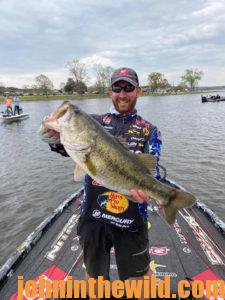 Ott DeFoe: There were bass that already had finished spawning, and bass that hadn’t spawned yet. Not very many bass were on the bed spawning when this one-day championship tournament was held. The bass that I caught were in two different stages. Some of the bass already had spawned-out and were leaving the spawning beds, and some of the bass hadn’t spawned and were just moving-up to head to the spawning beds. So, I would say the bass were in-between spawning and not spawning. Remember that all the bass in any lake don’t spawn at the same time. During the spawning season, you often will have bass that have just moved on to the beds to spawn, some holding on the beds will have just spawned, other bass leaving the beds to return to deep water after spawning, and bass holding in the staging area just about to spawn.
Ott DeFoe: There were bass that already had finished spawning, and bass that hadn’t spawned yet. Not very many bass were on the bed spawning when this one-day championship tournament was held. The bass that I caught were in two different stages. Some of the bass already had spawned-out and were leaving the spawning beds, and some of the bass hadn’t spawned and were just moving-up to head to the spawning beds. So, I would say the bass were in-between spawning and not spawning. Remember that all the bass in any lake don’t spawn at the same time. During the spawning season, you often will have bass that have just moved on to the beds to spawn, some holding on the beds will have just spawned, other bass leaving the beds to return to deep water after spawning, and bass holding in the staging area just about to spawn.
Phillips: On what kinds of places did you find all these big bass ganged-up?
DeFoe: The bass were funneled down from the main lake to the spawning flats in the creek by a bridge. Bass coming from the main lake to move into the back of the creeks to spawn were holding by the bridge, and the bass coming from the backs of the creeks that already had spawned out were also holding at the bridge before swimming out to the main lake. Both groups of bass were hungry.
Phillips: Where on the bridge did you find these bass and catch the most of them?
DeFoe: I was fishing on the main lake side of the bridge, casting to the bridge where the water was shallow down to a depth of about 8 feet. I was holding my boat in 12 feet of water. I was reeling the Rapala DT10 crankbait and letting it bump or dig the bottom as it came from that 8 feet of water to the flat in 12 feet of water. I was fishing that 8-12 foot break line. The 12 foot of water wasn’t the old creek channel but just was a small, underwater flat that dropped off into deeper water.
Phillips: How did you find this place and the bass holding on this spot? 
DeFoe: I actually identified this site during that one-day championship tournament. I was coming from the back side of the bridge up in the creek, headed out toward the main lake. I was idling under the bridge and looking at my depth finder as I went under the bridge. I saw all those bass sitting on that little break line with my Humminbird depth finder
(https://www.humminbird.com/) side-imaging feature. I wasn’t sure that all the fish I was seeing were bass, but I thought they might be. So, when I got on the lake side of the dam, I decided to go ahead and start fishing for them. The bass started hitting pretty quickly.
Phillips: How were the bass stacked-up on that ledge?
DeFoe: The bass were up off the bottom a little bit and suspended, which I knew would make catching them difficult. The fish were holding from 1-3 feet above the bottom in the 8-12 foot-deep range. So, they were at an average of 6 feet off the 8-foot bottom and out to about 10 feet off the 12-foot bottom. Sometimes I’d catch one or two bass, and the bass would come up in the water column and start feeding on shad on top of the water. So, I switched lures from the crankbait then to a top-water lure and caught one or two bass when they were schooling 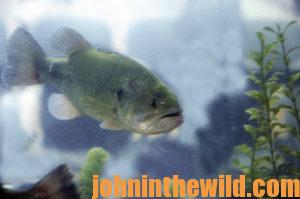 on top.
on top.
Phillips: What lure were you using when the bass started feeding on the top?
DeFoe: I was using a finesse wake bait.
Phillips: When the bass were suspended up off the bottom, how were you retrieving your crankbait to get the bass to bite?
DeFoe: I was using a very-erratic type of retrieve. I reeled the crankbait three or four times and then stopped the bait. I would use a reel, reel, reel, stop, reel, reel, reel, stop type of retrieve.
Phillips: When you stopped the crankbait, were you letting it remain still long enough so the lure would float up before you started cranking again?
DeFoe: No, not really. When I stopped, I was just hesitating the bait long enough, so that it would quit wiggling. Then I would start fast reeling again really hard.
Phillips: Do you think the bass were diving down on the bait, or were they just taking it at the depth of the water through which you were reeling the lure?
DeFoe: They were taking the lure both ways. Some of the bass were taking the bait at the level I was reeling, or they were coming up under the bait and taking the lure. Now, I did have one or two bass that I hooked under the lower jaw, which indicated that they were diving down on the bait. However, most of the bass were coming up from below the  bait and attacking the lure, or they were biting the bait at the same level that the lure was running.
bait and attacking the lure, or they were biting the bait at the same level that the lure was running.
To learn more about bass fishing, check out John E. Phillips’ book, “Winning Strategies of the Bass Pros,” at https://amzn.to/2XJrz3k, available in Kindle and print. Click here for the Audible link.
Tomorrow: What Happened Next on Ott DeFoe’s $100,000 Day of Bass Fishing



